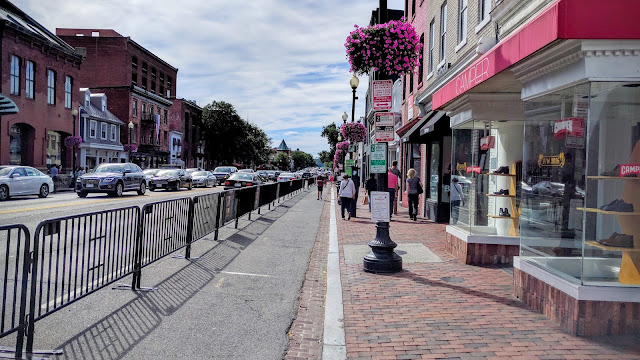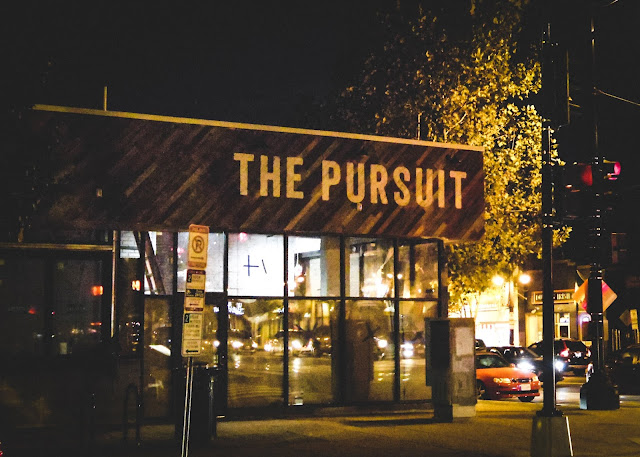More Space to Walk (and Bike?) in Georgetown
The Georgetown Business Improvement District instituted a cool new program earlier this year that creates more space for pedestrians in one of the city's busiest shopping neighborhoods.
On weekends from April to November, the 3200 block of M Street NW will have widened sidewalks. Basically, a lane of automobile parking has been eliminated on the north and south sides of the street and temporary metal crowd control barriers are placed in the street, blocking a lane and separating auto traffic from pedestrians. My initial observations:
1. The extra space was noticed. I've been to Georgetown on a busy weekends and yes, I noticed the extra sidewalk space on this weekend. You can mark the difference by simply walking the 3100 and 3200 blocks of M Street back-to-back. The flow is much smoother on the 3200 block. You don't get stuck behind slow pedestrians or window shoppers, and walking two or three abreast doesn't cause pedestrian traffic jams.
2. Bikers think it's their lane, too. And I don't know how to feel about this. I heard "on your left" and/or had the familiar bikeshare bike bell rang at me several times while walking in the street portion of the expanded sidewalk. Naturally, it's a great lane for bikes. It's flat asphalt, there are no cars, and you can travel relatively fast. On the other hand, it was kind of annoying essentially having to get *back* onto the regular sidewalk as not to be an irritant or have to look over shoulder. Obviously there is need more more bike infrastructure in Georgetown, if not M street in particular.
3. Auto traffic seemed unaffected. For the short time I observed, auto traffic seemed to move as it always does on M Street. Sure, there are horns blasting at Wisconsin and M because a driver ahead didn't proceed a millisecond after green. And yes, as a driver, you've always have to wait for pedestrians to cross before you turn, that hasn't changed. If anything, I thought traffic flowed better on the 3200 block because there were no delays/stoppages due to parallel parking, drivers slowly cruising for parking, or any illegal parking.
Overall I love the experiment and hope that data (observational and otherwise) proves useful to trying to find the ever-evolving solution of creating infrastructure that helps divers, bikers, and walkers share the limited space we have to move around.
Update:
To learn more, check out the BID's page on the program. And here's Greater Greater Washington's write up of the 2014 experiment of the same nature.
Overall I love the experiment and hope that data (observational and otherwise) proves useful to trying to find the ever-evolving solution of creating infrastructure that helps divers, bikers, and walkers share the limited space we have to move around.
Update:
To learn more, check out the BID's page on the program. And here's Greater Greater Washington's write up of the 2014 experiment of the same nature.





